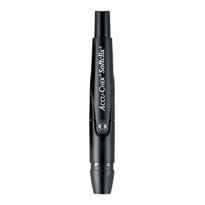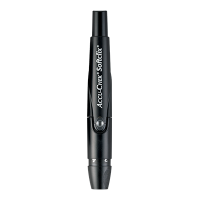
Item Description
The Accu-Chek Softclix lancing device can help make lancing easy. Its rotatable cap offers 11 fixed depth settings for different skin types. Clixmotion technology minimizes any painful side-to-side motion of the lancet, which is why this lancing device is virtually pain-free to use.
Product ManualsCOMFORT
11 penetration depth settings
PENETRATION
0.8 to 2.3 mm
SAFETY
Precise lancing, less risk of skin damage
NEEDLE WIDTH
0.4 mm
WEIGHT
21 g
Benefits and FeaturesAdditional specifications
- Virtually pain-free lancing
- Clixmotion technology controls the lancet’s movement
- Less side-to-side motion of the lancet means less skin damage
- Turn the rotatable cap for 11 penetration depth settings for different skin types
- The Accu-Chek Softclix lancets are precisely manufactured for precise entry
Accu-Chek Softclix is available in selected countries in the Middle East and Africa region. Please visit our Contact Us page to get in touch with your local Roche Diabetes Care entity or Roche Distributor.
Penetration Depth:
11 fixed-depth options, set with the rotatable cap
Penetration Range:
0.8 to 2.3 mm
Lancing Technology:
Clixmotion Technology
Weight:
21 g
Alternative Site Testing:
AST cap provided
Needle Diameter:
0.4 mm
Gauge:
28
Coating:
Silicon
How to use the Accu-Chek Softclix lancing device
The Accu-Chek Softclix lancing device is small and easy to operate, with one-hand priming and lancing.
- Pull off the cap. Insert a new lancet into the lancet holder and push it in until it clicks.
- Press the cap on again until it clicks.
- Rotate the cap until the desired penetration depth is set.
- Press the priming button down until it clicks.
- Press the lancing device firmly against the side of the fingertip.
- Press the yellow release button.
- After measuring your blood glucose, pull off the cap and slide the ejector forwards to remove the lancet.

